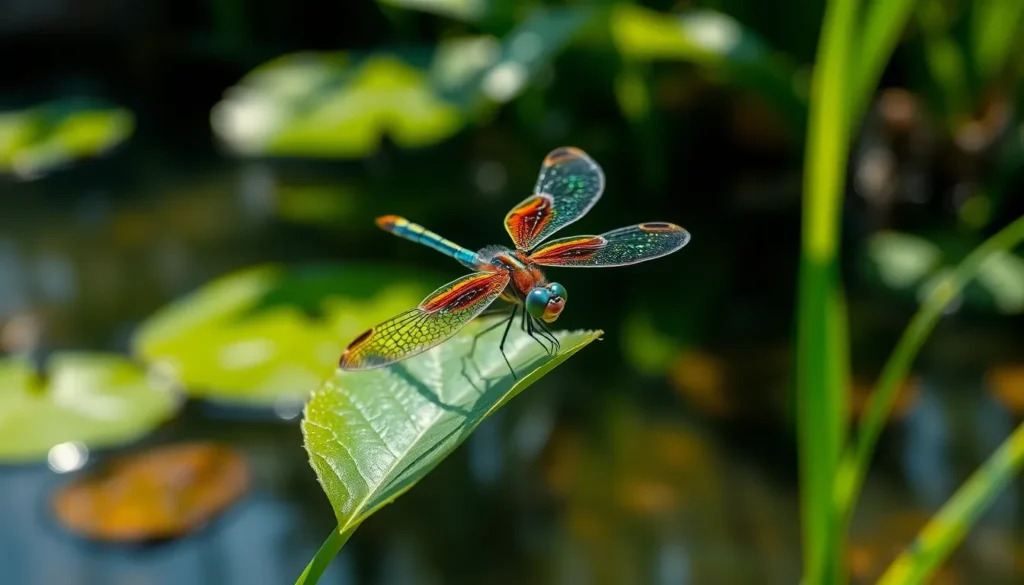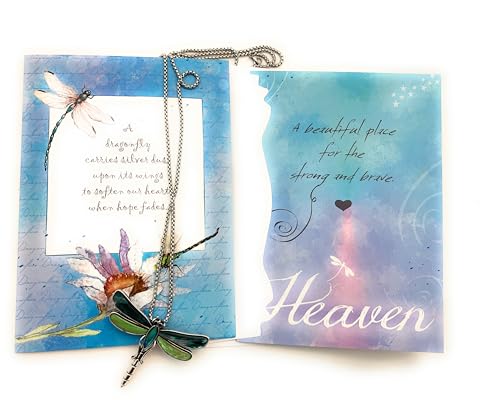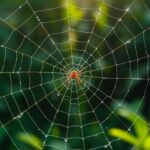Dragonflies have captivated humans for centuries with their iridescent wings and graceful flight patterns. These enchanting creatures aren’t just beautiful insects – they’re powerful symbols that appear across cultures worldwide, carrying deep spiritual meanings that continue to resonate with us today.
We’ve all witnessed that magical moment when a dragonfly hovers near water, its wings catching sunlight like stained glass. But there’s so much more beneath this surface beauty. From ancient Japanese folklore to modern spiritual practices, dragonflies represent transformation, adaptability, and the connection between our physical and spiritual worlds.
Whether you’ve encountered dragonflies in dreams, meditation, or simply noticed them appearing frequently in your life, understanding their symbolism can unlock profound insights about your personal journey. Let’s explore the rich tapestry of meanings these remarkable creatures hold and discover what messages they might be bringing into your industry.
The Ancient Origins of Dragonfly Symbolism
Ancient civilizations recognized dragonflies as powerful spiritual messengers long before modern interpretations emerged. These delicate creatures carried profound meaning across diverse cultures, establishing symbolic foundations that continue influencing contemporary spiritual practices.
Eastern Traditions and Beliefs
Eastern cultures view dragonflies as symbols of courage, strength, and happiness in their traditional belief systems. Japanese folklore associates these insects with the spirits of deceased warriors, believing they return to earth as dragonflies to protect their families. The samurai adopted dragonfly imagery on their armor and weapons, representing fearlessness and victory in battle.
Chinese mythology connects dragonflies to prosperity and harmony, often depicting them in art alongside lotus flowers to symbolize rebirth. Buddhist teachings embrace dragonflies as representations of mindfulness and living in the present moment. Vietnamese culture considers dragonfly encounters as signs of good fortune, particularly during harvest seasons when these creatures appear in rice fields.
Native American Perspectives
Native American tribes across North America developed rich dragonfly symbolism rooted in transformation and illusion. Pueblo communities view dragonflies as water spirits that bring rain and ensure successful crops during dry seasons. Navajo traditions associate these creatures with pure water and the ability to see beyond surface appearances.
Plains tribes incorporate dragonfly imagery in their ceremonies to represent swiftness and activity, believing these insects carry prayers to the spirit industry. Hopi legends describe dragonflies as messengers between the physical area and ancestral spirits. Many tribal stories feature dragonflies as trickster figures who teach important lessons about perception and reality.
Celtic and European Folklore
Celtic mythology portrays dragonflies as creatures of the fairy area, serving as bridges between the mortal industry and magical dimensions. Irish folklore connects these insects to transformation magic, believing witches could shapeshift into dragonfly form to avoid detection. Welsh traditions view dragonflies as companions to fairies, helping them navigate between different realms of existence.
European folklore from medieval times often depicted dragonflies as symbols of change and self-realization, appearing in illuminated manuscripts alongside religious imagery. Scandinavian legends describe dragonflies as creatures that could reveal hidden truths to those pure of heart. Germanic traditions associated these insects with the souls of the departed, believing they returned to comfort grieving families during times of loss.
Transformation and Personal Growth
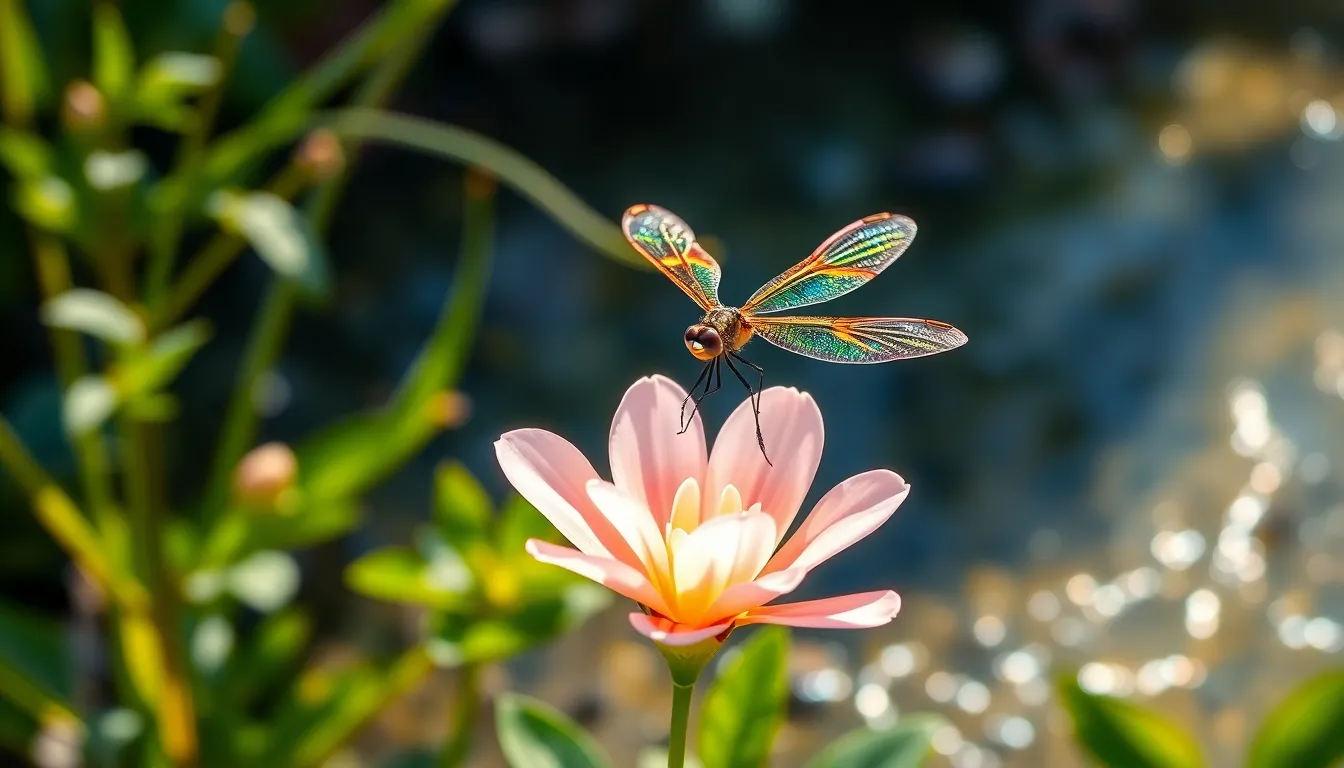
Dragonfly symbolism centers on transformation and personal growth, reflecting our own journey of self-discovery and evolution. These remarkable creatures embody the essence of change, adaptability, and emotional maturity as we navigate life’s transitions.
Metamorphosis as a Life Metaphor
The dragonfly’s lifecycle serves as a powerful metaphor for personal transformation. Starting as aquatic nymphs and emerging as aerial adults, these insects demonstrate how we can transcend our current circumstances to reach new heights of understanding and capability.
Their transformation from water-bound to sky-soaring creatures mirrors our human experiences of change and development. We observe how dragonflies adapt to completely different environments during their lifecycle, symbolizing our capacity to evolve beyond our initial conditions.
This natural process represents resilience and flexibility in facing life’s challenges. Dragonflies show us that dramatic change isn’t just possible but necessary for growth, encouraging us to embrace transitions rather than resist them.
Breaking Through Illusions
Dragonflies possess iridescent colors that shift with different viewing angles, symbolizing the importance of clarity and insight in our personal journeys. Their ability to reflect multiple perspectives reminds us to examine situations from various viewpoints before making decisions.
These creatures encourage us to break through mental barriers and limiting beliefs that may hold us back. Their transparent wings and ability to hover, dart, and change direction instantly represent the mental agility we need to navigate life’s complexities.
We find in dragonfly symbolism a call to approach life’s transitions with poise and openness. Their presence reminds us to seek new perspectives and overcome fears that prevent us from achieving personal enlightenment and self-realization.
Spiritual Meanings and Messages
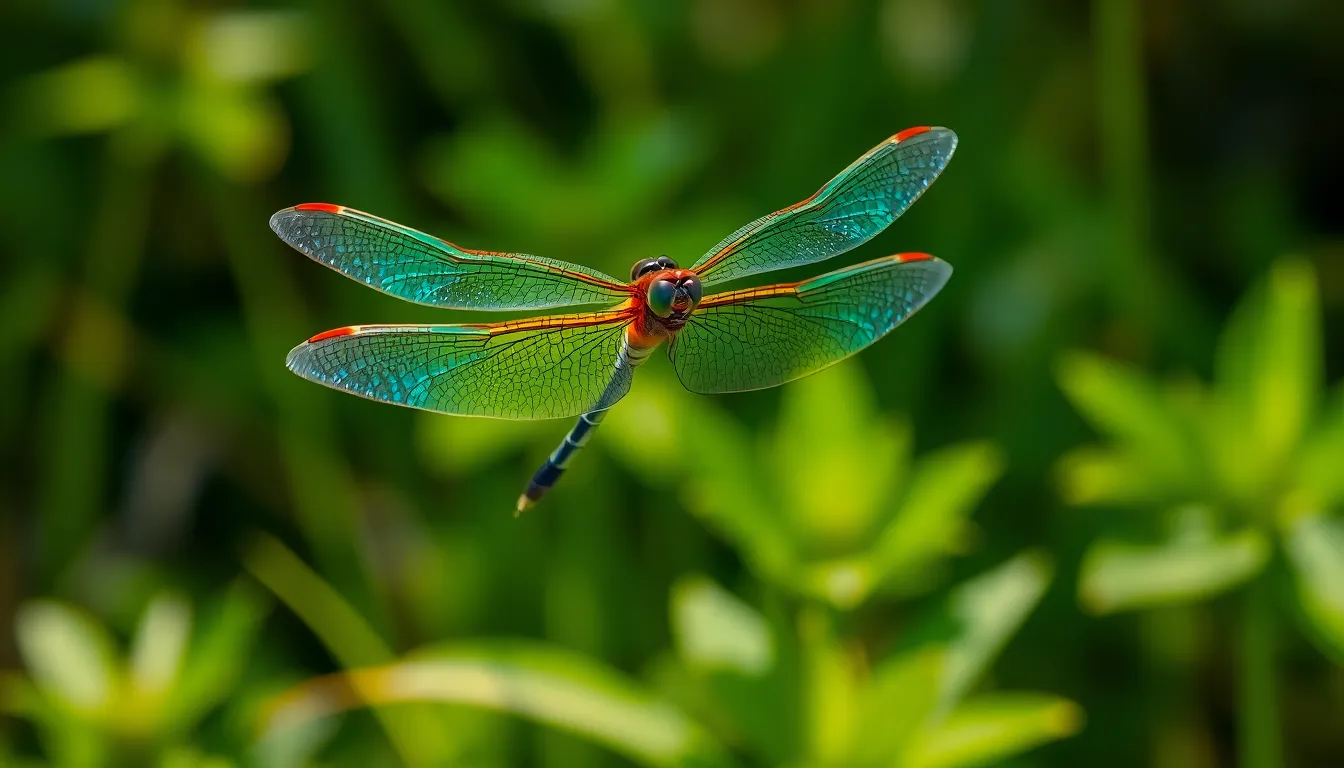
Dragonflies serve as powerful spiritual messengers that encourage awakening and enlightenment across diverse cultures and traditions. These magnificent creatures carry profound meanings that connect us to deeper spiritual truths and inspire personal transformation.
Connection to the Spirit Industry
Dragonflies act as bridges between our physical reality and the spiritual area. Their association with themes of light and wind creates metaphors for spiritual truth and divine guidance that transcend religious boundaries. These creatures often appear as messengers from the spirit industry, offering comfort and direction during times of uncertainty.
Many spiritual practitioners recognize dragonflies as guides that help us navigate our spiritual journey. Their presence frequently signals that we’re receiving spiritual messages or that our deceased loved ones are nearby. The dragonfly’s ethereal flight patterns mirror the movement of spirit energy, making them powerful symbols of spiritual communication.
Emotional Maturity and Wisdom
Dragonflies embody the wisdom that comes from handling life’s complexities with grace and resilience. Their symbolism encourages us to develop self-awareness and embrace our personal power as we face challenging situations. These creatures represent the emotional maturity gained through overcoming obstacles and learning from difficult experiences.
The dragonfly’s ability to see in multiple directions simultaneously symbolizes the wisdom to examine situations from various perspectives. This quality teaches us to approach conflicts with understanding rather than judgment. Their presence reminds us that true wisdom comes from embracing both our strengths and vulnerabilities while maintaining emotional balance.
Adaptability and Change
Dragonflies demonstrate remarkable adaptability through their complete metamorphosis from aquatic nymphs to aerial masters. This transformation represents our capacity to evolve and adapt to new circumstances while maintaining our core identity. Their lifecycle symbolizes the courage required to embrace important life changes and emerge stronger.
The dragonfly’s mastery of both water and air elements showcases the importance of flexibility in our personal growth journey. These creatures encourage us to remain open to new possibilities and trust in our ability to navigate transitions. Their presence often signals that we’re entering a period of positive change that requires embracing new perspectives and releasing outdated patterns.
Dragonfly Symbolism in Different Cultures
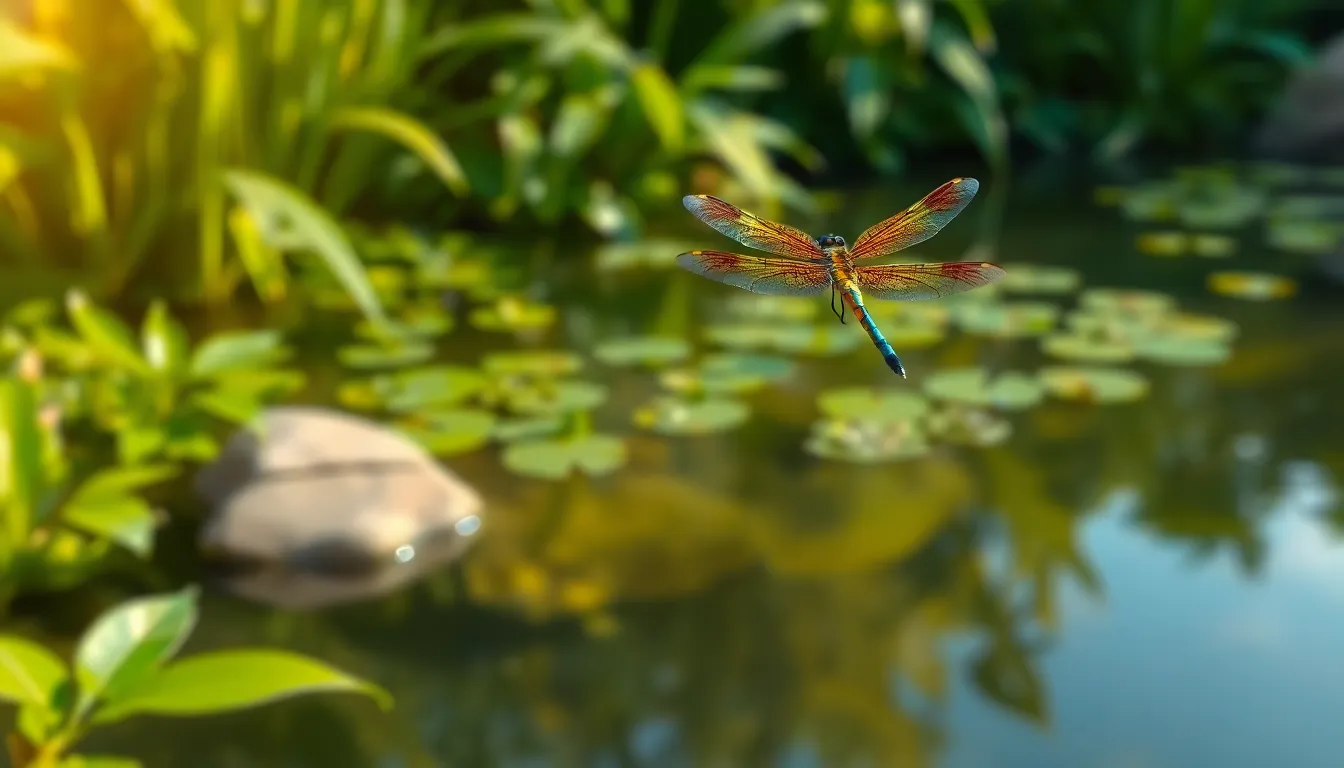
Dragonfly symbolism varies dramatically across global cultures, each civilization attributing unique spiritual meanings to these remarkable insects. We find that cultural interpretations reflect local values and beliefs while maintaining common themes of transformation and spiritual connection.
Japanese Culture and Art
Japanese culture celebrates dragonflies as powerful symbols of agility, determinedness, and victory, particularly within samurai traditions. Warriors revered these insects for embodying strength and bravery, frequently incorporating dragonfly motifs into their armor designs. Artists and poets throughout Japanese history have drawn inspiration from dragonflies, celebrating their natural beauty and graceful flight patterns. Traditional Japanese art often features dragonflies as representations of seasonal change and the fleeting nature of life, connecting them to Buddhist concepts of impermanence.
Chinese Philosophy and Feng Shui
Chinese philosophical traditions associate dragonflies with change and transformation, aligning with broader cultural emphasis on balance and harmony. Feng shui practitioners recognize dragonflies as symbols of adaptability, encouraging practitioners to embrace life’s natural rhythms and transitions. These insects represent the ability to navigate between different elements and environments, reflecting Chinese values of flexibility and resilience. Ancient Chinese texts reference dragonflies in contexts of spiritual growth and personal development, emphasizing their role as guides through periods of change.
African Traditional Beliefs
African cultures across the continent have developed diverse interpretations of dragonfly symbolism, though exact documented traditions vary by region. Many African communities view dragonflies as symbols of transformation and agility due to their swift flight patterns and ability to thrive in various environments. Traditional beliefs often connect dragonflies to water spirits and ancestral communication, reflecting their aquatic breeding habits and mysterious life cycles. Some African cultures interpret dragonfly appearances as messages from deceased relatives or as indicators of upcoming spiritual events, emphasizing their role as intermediaries between physical and spiritual realms.
Modern Interpretations and Applications

Contemporary society embraces dragonfly symbolism as a powerful representation of transformation, adaptability, and change across multiple domains. We recognize these creatures for their dramatic metamorphosis, which mirrors our human journey of personal growth and identity renewal.
Contemporary Spiritual Practices
Dragonflies serve as messengers between the spirit industry and the living in modern spiritual contexts. Many practitioners believe these creatures carry wisdom from ancestors or spiritual guides during meditation and mindfulness sessions. Their presence signals good fortune, health, and emotional healing across various spiritual traditions.
Contemporary spirituality integrates dragonfly symbolism from Japanese, Native American, and Celtic traditions to represent courage and mystical intuition. We observe their role in bridging the mundane and spiritual worlds through their 360-degree vision and rapid flight capabilities. Spiritual practitioners use dragonfly imagery to inspire awakening, clarity, and the release of limiting beliefs during groundbreaking practices.
Therapeutic and Healing Uses
Therapeutic settings incorporate dragonfly symbolism as a metaphor for emotional transformation, balance, and recovery from adversity. Art therapy sessions use their image to encourage emotional release and personal growth among clients experiencing difficult transitions. Counselors reference the dragonfly metamorphosis process as a model for resilience during challenging life changes.
Mindfulness exercises feature dragonfly imagery to represent the ability to navigate life’s challenges with agility and ease. We apply their transformational journey in healing practices to help individuals shed old identities and embrace new beginnings. Their symbolism proves particularly effective in recovery programs where participants undergo important personal change.
Art and Literature Representations
Visual artists incorporate dragonflies into jewelry, body art, and contemporary artwork as symbols of transformation, resilience, and beauty. Their shimmering colors and delicate structure inspire artistic representations of change, hope, and spiritual connection. We find dragonfly motifs prominently featured in modern accessories and branding that reflect desires for renewal and empowerment.
Literature employs dragonflies as metaphors for fleeting moments of insight, adolescence, and life’s ephemeral nature. Writers use these creatures to convey messages of spiritual awakening and renewal in contemporary poetry and prose. Modern literary works feature dragonflies as symbols of overcoming obstacles and embracing new beginnings, reflecting their transformational significance across creative mediums.
How to Apply Dragonfly Symbolism in Daily Life

Integrating dragonfly symbolism into our daily routines creates meaningful opportunities for transformation and spiritual growth. We can harness these powerful symbols through practical applications that connect us with the dragonfly’s core energies of change, adaptability, and enlightenment.
Meditation and Mindfulness Practices
Mindful movement forms the foundation of dragonfly inspired meditation practices. We practice yoga or walking meditation while focusing on balance and fluid movement that mirrors the dragonfly’s graceful flight patterns. Emotional reflection through meditation allows us to explore inner transformations by contemplating the dragonfly’s metamorphosis from water to air.
Breath work connects us with the dragonfly’s mastery of both aquatic and aerial environments. We visualize drawing breath from water elements during inhalation and releasing it through air elements during exhalation. Color meditation incorporates the dragonfly’s iridescent wing patterns by focusing on shifting rainbow hues during our practice sessions.
Present moment awareness mirrors the dragonfly’s ability to hover and dart with precision. We cultivate this by observing our thoughts without attachment while maintaining steady focus on immediate experiences. Balance exercises help us embody the dragonfly’s remarkable stability during flight by practicing standing poses or movement sequences that challenge our equilibrium.
Personal Transformation Rituals
Nature connection rituals involve spending dedicated time outdoors observing dragonflies in their natural habitats. We create sacred space near water sources where dragonflies congregate to inspire personal growth and transformation. Colorful expression practices include wearing clothing or jewelry featuring dragonfly motifs and iridescent colors that symbolize embracing change and joy.
Water ceremonies honor the dragonfly’s aquatic origins by conducting reflection rituals near ponds or streams. We write intentions for transformation on biodegradable paper and release them into flowing water while visualizing our desired changes. Movement rituals incorporate dance or tai chi sequences that mimic dragonfly flight patterns to embody their adaptability and grace.
Seasonal transformation practices align our personal changes with natural cycles by marking solstices and equinoxes with dragonfly themed ceremonies. We create altar spaces featuring dragonfly imagery and natural elements like water bowls and colorful stones. Journaling exercises document our metamorphosis journey by recording insights gained through dragonfly encounters and symbolism interpretations.
Conclusion
The dragonfly’s enduring presence across cultures and throughout history speaks to its profound impact on our collective consciousness. These remarkable creatures continue to offer us guidance as we navigate our own paths of growth and discovery.
Whether we encounter dragonflies in nature meditation dreams or artistic representations their message remains consistent: embrace change with grace and trust in our ability to transform. Their symbolism reminds us that we too can rise above challenging circumstances and emerge stronger.
By incorporating dragonfly wisdom into our daily practices we open ourselves to deeper spiritual insights and personal breakthroughs. These magnificent beings serve as gentle reminders that transformation isn’t just possible—it’s our natural birthright.
Frequently Asked Questions
What is the spiritual meaning of dragonflies?
Dragonflies symbolize transformation, adaptability, and the connection between physical and spiritual realms. They represent personal growth, self-realization, and the ability to navigate life’s changes with grace. Across cultures, they’re viewed as spiritual messengers, bridging our earthly existence with higher consciousness and often signaling the presence of deceased loved ones.
What does it mean when you see a dragonfly frequently?
Frequent dragonfly encounters often indicate you’re entering a period of transformation or spiritual awakening. They may be appearing as spiritual messengers to guide you through personal changes, encourage self-reflection, or signal that you need to examine situations from different perspectives. Pay attention to the circumstances surrounding these sightings for deeper insights.
How do different cultures interpret dragonfly symbolism?
Japanese culture associates dragonflies with agility, victory, and warrior spirits. Chinese traditions link them to prosperity, harmony, and adaptability. Native American perspectives view them as symbols of transformation and water spirits. Celtic folklore portrays them as magical creatures bridging mortal and fairy realms. African cultures see them as ancestral spirit communicators.
What does dragonfly transformation symbolize in personal growth?
The dragonfly’s metamorphosis from water-dwelling nymph to aerial creature represents our capacity for profound personal transformation. It symbolizes transcending limitations, embracing change, and evolving while maintaining core identity. Their lifecycle encourages us to view challenges as opportunities for growth and to approach life transitions with resilience and openness.
How can I incorporate dragonfly symbolism into my spiritual practice?
Practice mindfulness and meditation while observing dragonflies in nature. Engage in water ceremonies or rituals near ponds and streams. Use dragonfly imagery in journaling exercises to document personal insights and transformations. Incorporate their graceful movements into yoga or breath work practices. Align personal changes with seasonal cycles, honoring natural transformation rhythms.
What does dragonfly symbolism mean in dreams?
Dragonfly dreams often signify upcoming changes, spiritual messages, or the need for self-examination. They may indicate you’re ready to break through illusions or limiting beliefs. Dreams featuring dragonflies can represent emotional maturity, wisdom gained through experience, or guidance from spiritual sources. Pay attention to the dream context for more specific meanings.
Are dragonflies considered good luck symbols?
Yes, dragonflies are generally considered positive symbols across cultures. They represent good fortune, prosperity, and beneficial changes. In many traditions, they’re viewed as bringers of joy, harmony, and spiritual blessings. Their presence is often interpreted as a sign that positive transformation is coming or that you’re on the right spiritual path.
How do dragonflies represent emotional maturity?
Dragonflies embody emotional maturity through their adaptability and resilience. Their ability to navigate both water and air represents mastering different emotional states and life circumstances. They symbolize the wisdom to approach challenges with poise, the strength to overcome obstacles, and the insight to see situations clearly from multiple perspectives.

